Laser printer
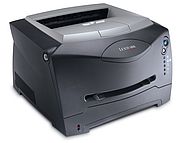
Laser printers work on the same principle as copiers (manufacturers often use the same printing unit for both devices). A laser or LED array discharges specific areas on the plastic surface of a roller that has previously been electrostatically charged, whereupon the fine, black toner dust adheres only to the still-charged areas of the roller and is then transferred to an equally statically charged paper. Once the image is built up, many copies can be printed very quickly in copy mode. Fuser rollers fuse the toner dust to the paper and even make it waterproof. Current home and small office printers currently print about 20 pages per minute. A laser printer needs a built-in memory, since the entire page content must be transferred to the platen within a very short time. The power requirement is high, but the overall consumption costs are relatively low. Color laser printers have also been available for a few years, but their color fidelity does not yet reach the level of a good inkjet printer.
Modern color printers provide printouts with a barely visible mark that leaves the date of the printout and an identification number of the printer in coded form on the sheet.
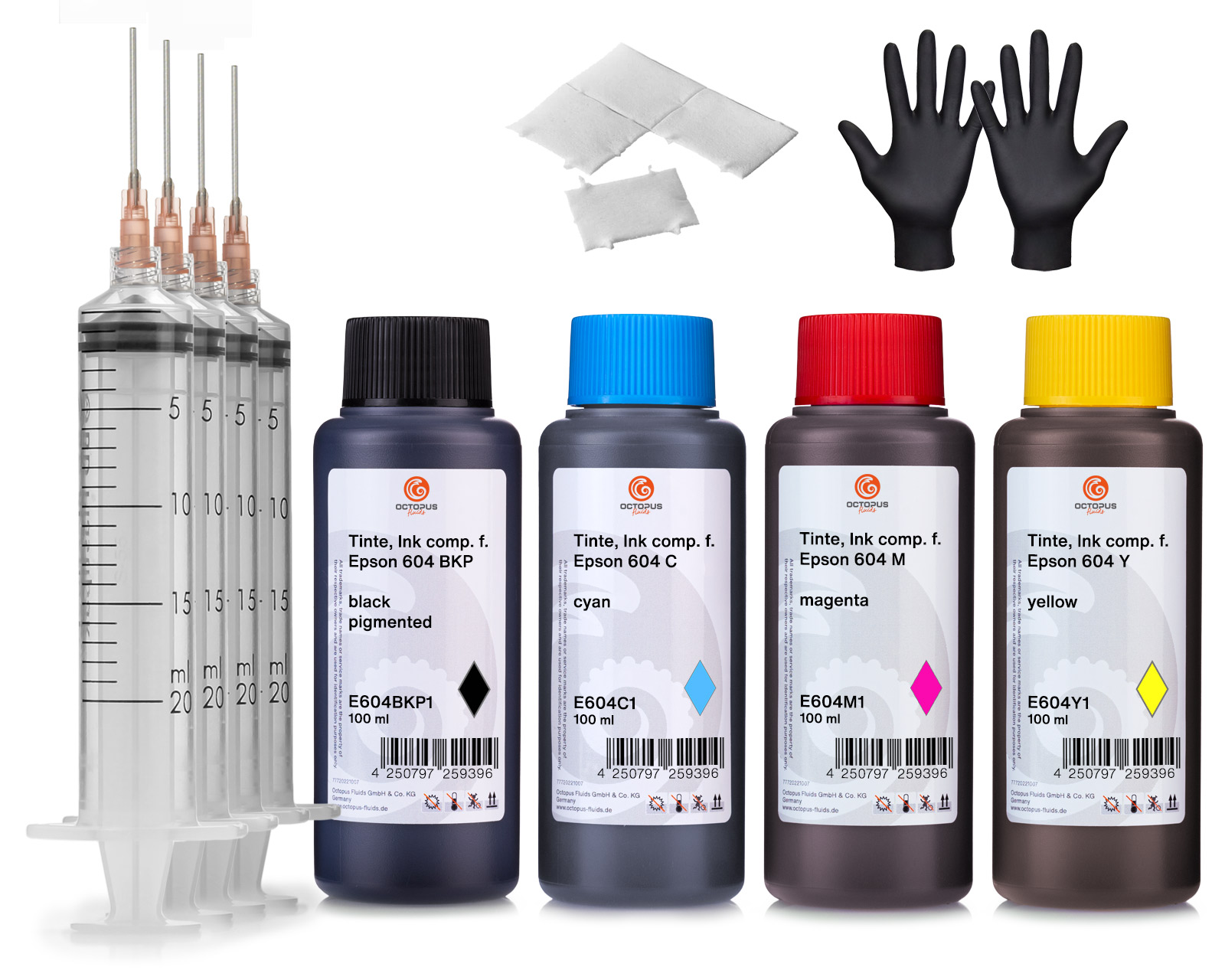 Octopus printer ink set compatible for Epson 604 ink cartridges, WorkForce 2950DWF 2930DWF
Octopus printer ink set compatible for Epson 604 ink cartridges, WorkForce 2950DWF 2930DWF
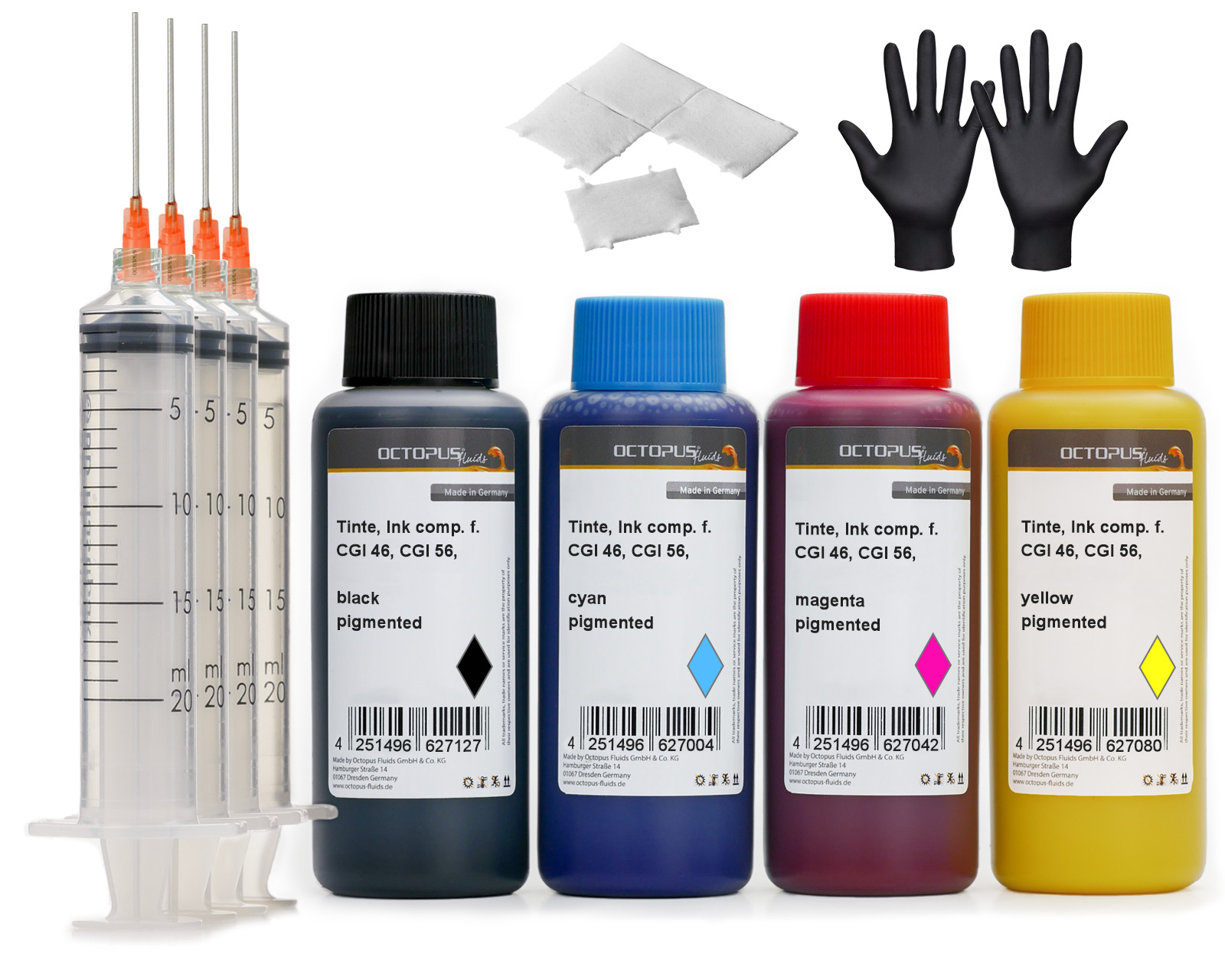 Printer Ink Set for Canon GI 46, GI 56 ink tank
Printer Ink Set for Canon GI 46, GI 56 ink tank
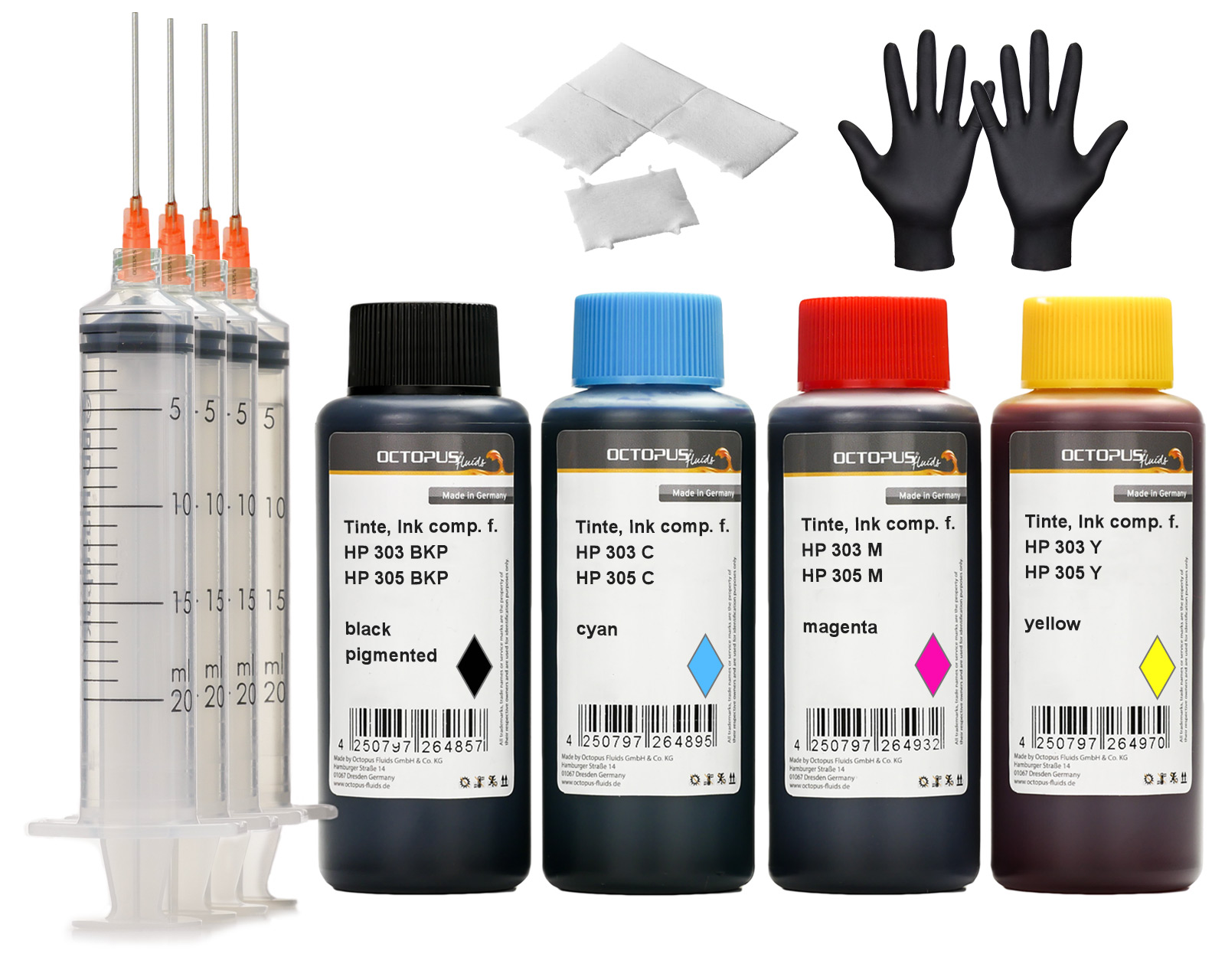 Refill ink set compatible for HP 303 and HP 305 Ink Cartridges, DeskJet, DeskJet Plus, Envy, Envy Pro
Refill ink set compatible for HP 303 and HP 305 Ink Cartridges, DeskJet, DeskJet Plus, Envy, Envy Pro
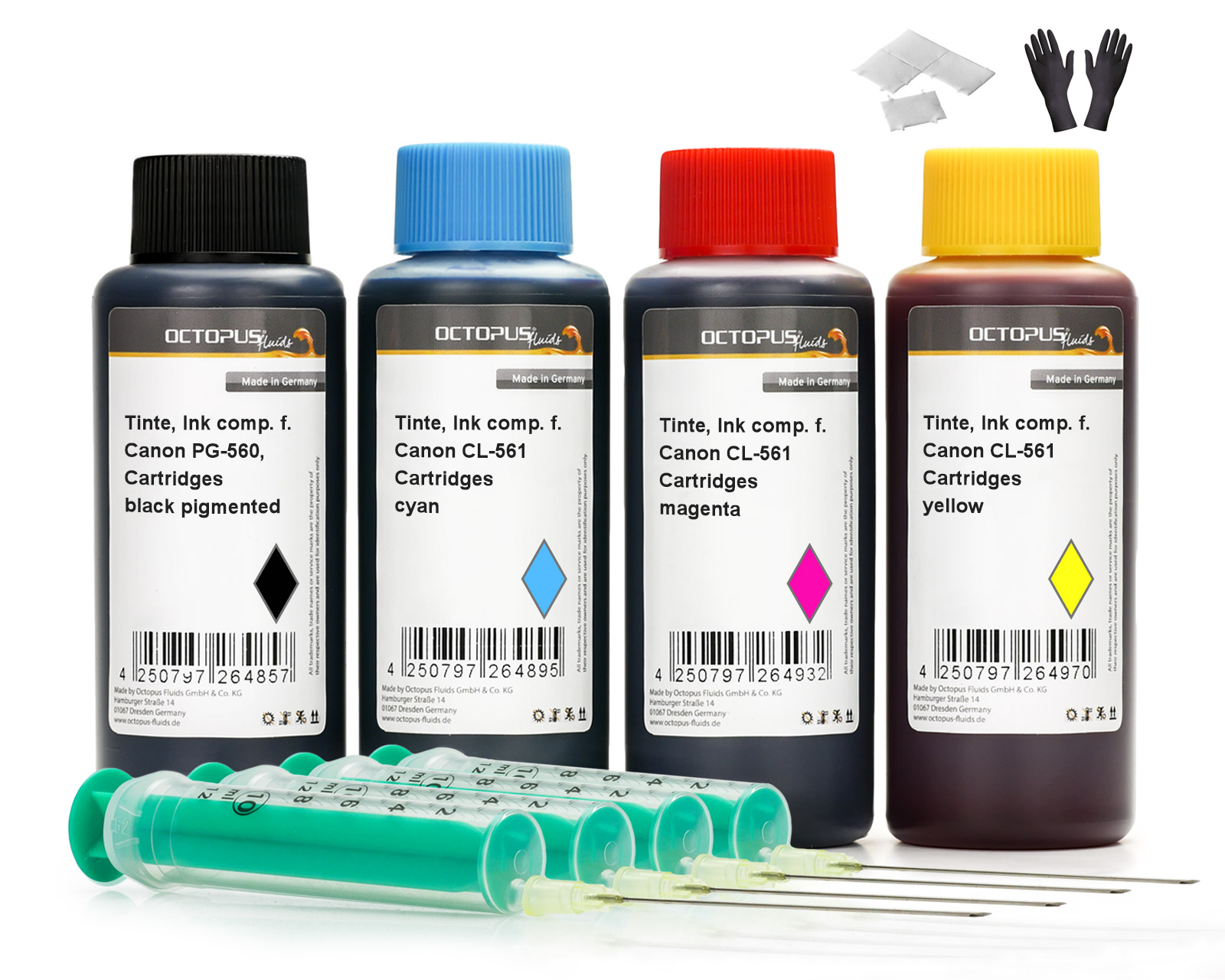 Octopus printer ink set compatible for Canon PG-560, CL-561 ink cartridges, Canon Pixma TS 5300, 7400
Octopus printer ink set compatible for Canon PG-560, CL-561 ink cartridges, Canon Pixma TS 5300, 7400
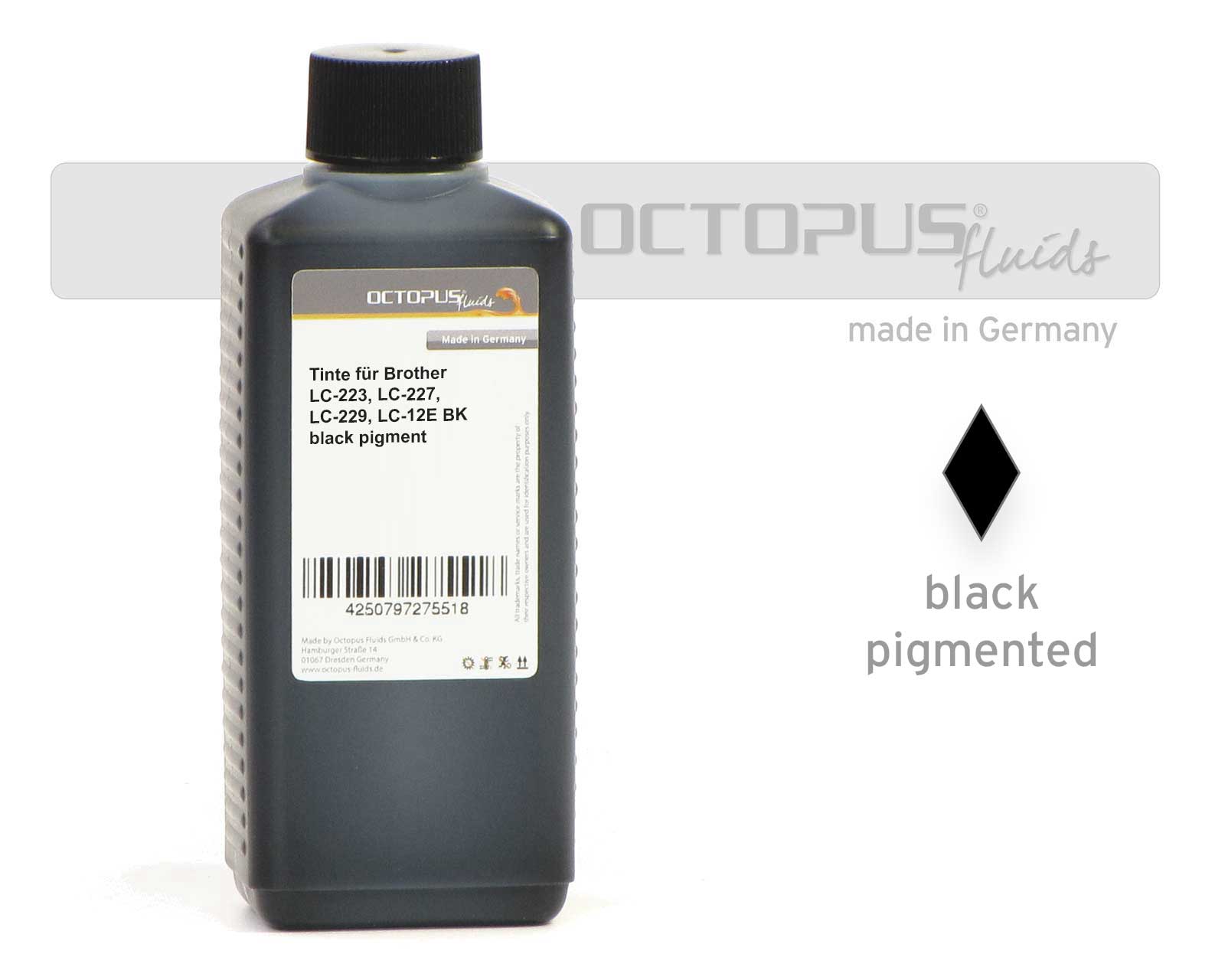 Refill ink comp. with Brother LC-223, LC-227, LC-229, LC-12E black pigmented
Refill ink comp. with Brother LC-223, LC-227, LC-229, LC-12E black pigmented
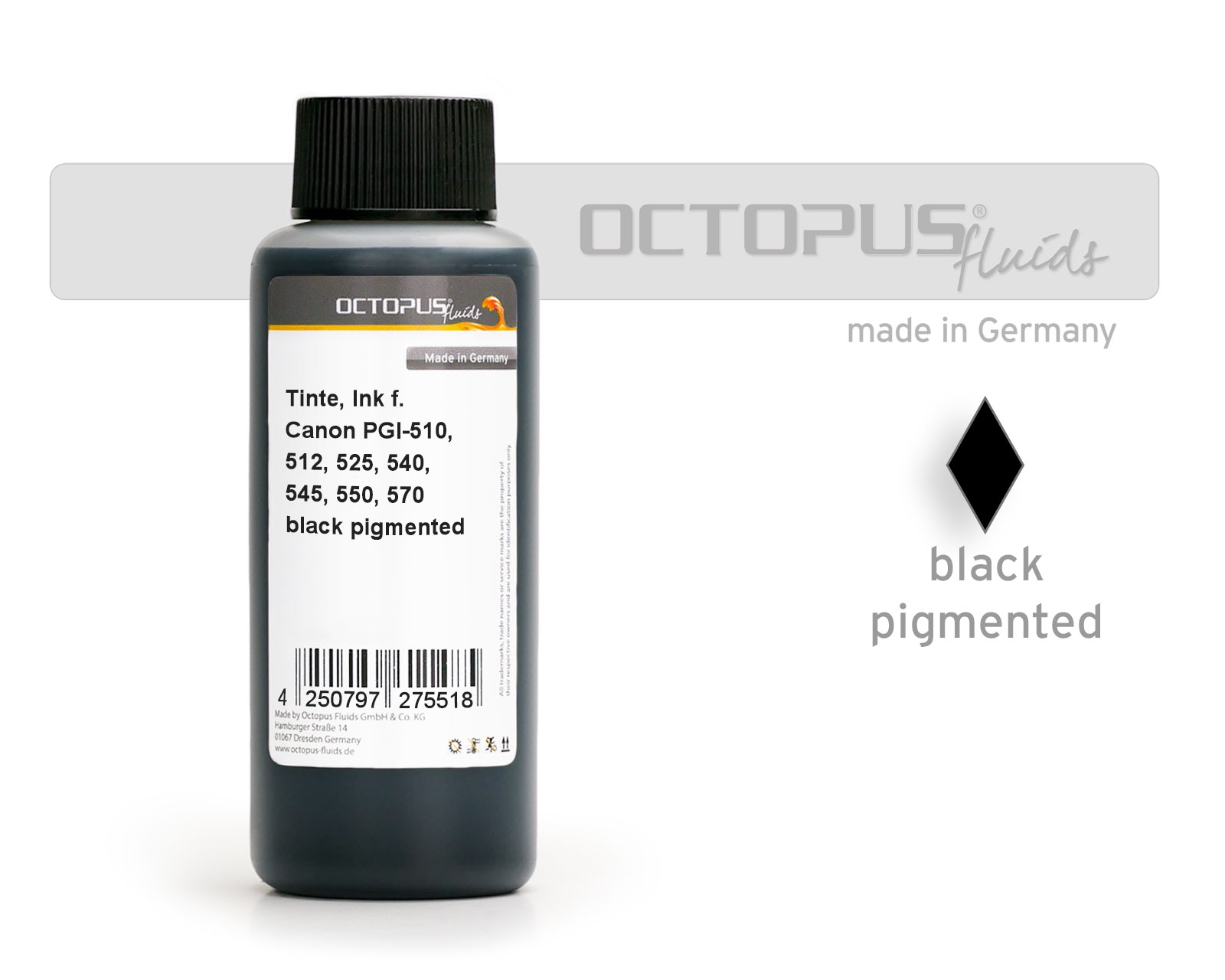 Ink for Canon PGI-525, 550, 555, 570, PG-540, 545, 510, 512 pigm. black
Ink for Canon PGI-525, 550, 555, 570, PG-540, 545, 510, 512 pigm. black
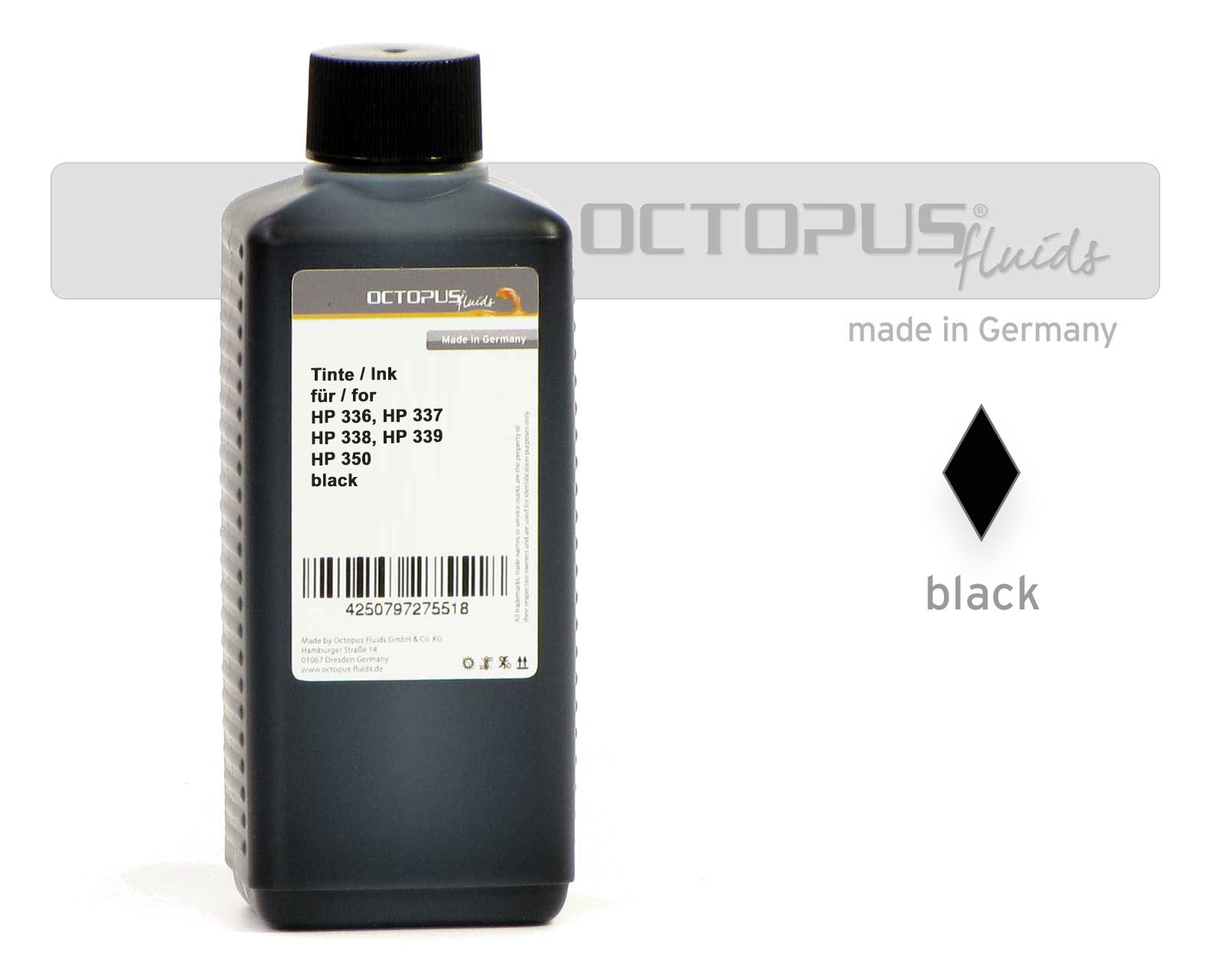 Refill ink compatible for HP 336, 337, 338, 339, 350, 350 XL pigmented black
Refill ink compatible for HP 336, 337, 338, 339, 350, 350 XL pigmented black







